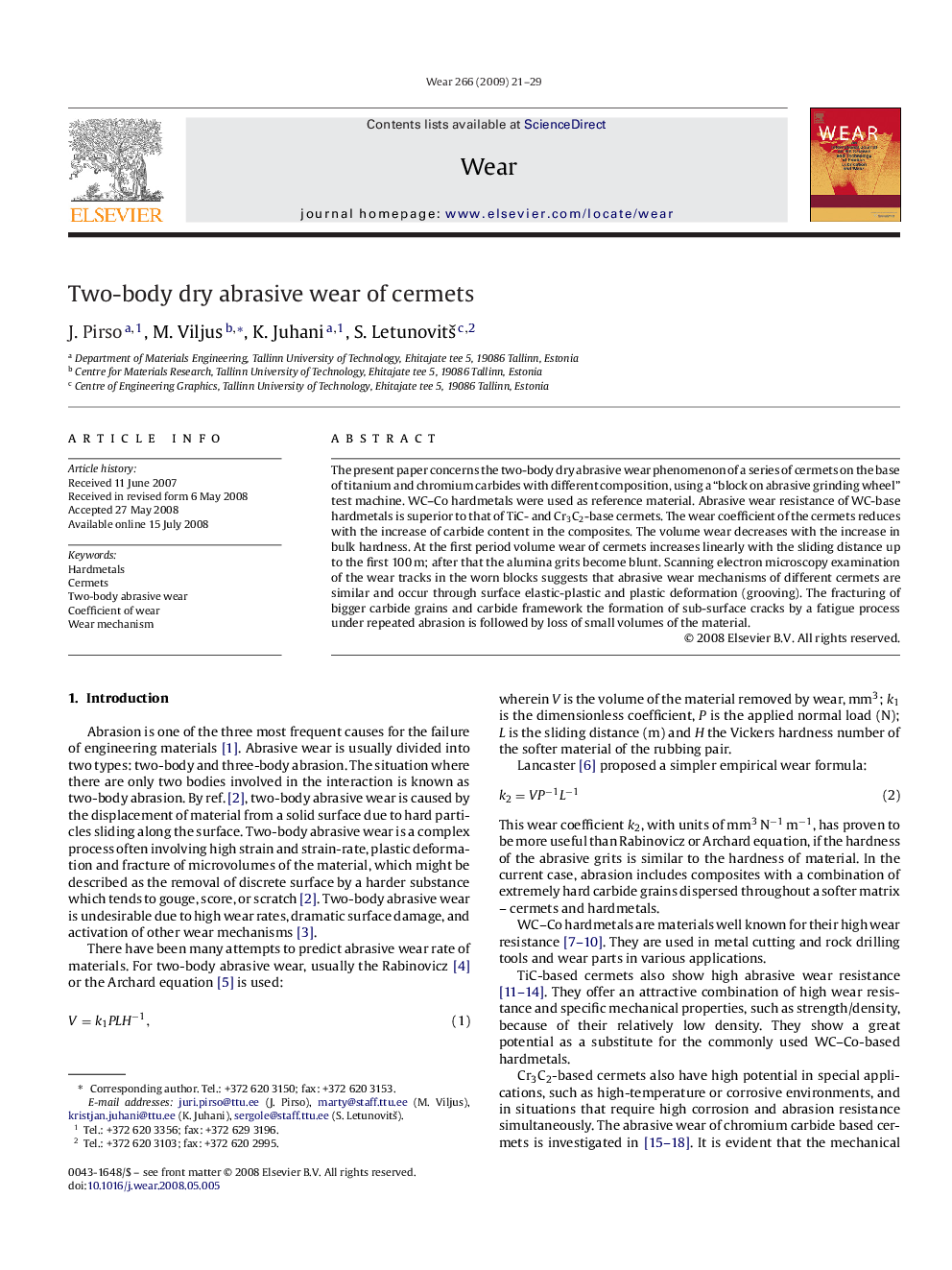| Article ID | Journal | Published Year | Pages | File Type |
|---|---|---|---|---|
| 618813 | Wear | 2009 | 9 Pages |
The present paper concerns the two-body dry abrasive wear phenomenon of a series of cermets on the base of titanium and chromium carbides with different composition, using a “block on abrasive grinding wheel” test machine. WC–Co hardmetals were used as reference material. Abrasive wear resistance of WC-base hardmetals is superior to that of TiC- and Cr3C2-base cermets. The wear coefficient of the cermets reduces with the increase of carbide content in the composites. The volume wear decreases with the increase in bulk hardness. At the first period volume wear of cermets increases linearly with the sliding distance up to the first 100 m; after that the alumina grits become blunt. Scanning electron microscopy examination of the wear tracks in the worn blocks suggests that abrasive wear mechanisms of different cermets are similar and occur through surface elastic-plastic and plastic deformation (grooving). The fracturing of bigger carbide grains and carbide framework the formation of sub-surface cracks by a fatigue process under repeated abrasion is followed by loss of small volumes of the material.
